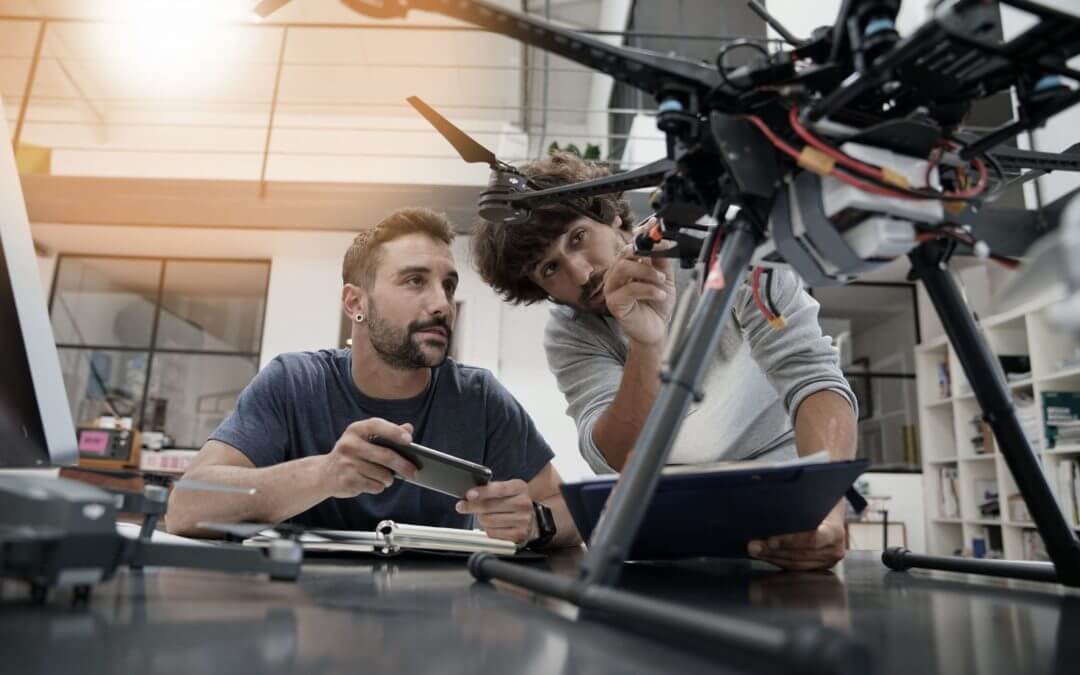Drones. They are a complicated tool with many variables and elements that you need to make the cogs work together, so to speak.
We’ve talked at length about how the most important part of developing a drone program is getting to the root of your problem. What is a challenge you’re facing at work right now that could be solved through effective drone use?
How can you harness the power of drones to simplify your day-to-day operations and enhance the tasks you’re already performing? Once you’ve isolated your problem, you’ll be in a strong position to design your drone program.
The unmanned air vehicle (UAV) is a crucial part of the overall system, but a comprehensive drone solution involves much more than just the UAV (aka the drone).
In this blog you’ll learn all about the various parts of a drone’s physical systems, the payload and why it’s important.
There is the air vehicle itself…
Drones come in many types with different specifications and abilities. On the market, you’ll see small, lightweight drones that can travel long distances with specialised payloads, as well as budget-friendly options that are designed to handle the basics for smaller operations.
The drone you ultimately choose to solve your specific problem varies on your needs, budget, preferences, and other factors. There are many different manufacturers and distributors so it’s useful to consult with an expert when purchasing a drone for your work.
One of the most important parts of the program is the payload
What is payload? The payload is the equipment the air vehicle carries to perform its duties.
This refers to components that people often fail to think of as separate from the vehicle itself, like cameras, radar, lasers, sensors, communications technology, and more. The drone payload varies depending on the objective of your mission.
For example, if you were using a drone to deliver medical supplies, then your payload might be life-saving vaccines or first-aid kits. If your objective was to survey a remote plot of land for research then your payload could be a high-powered camera.
Let’s take a deeper look at different kinds of payloads:
- Cameras: Drones can carry all kinds of cameras for various types of imaging. Some drones carry thermal-imaging cameras, while others carry optical cameras that can capture highly detailed photos from high above the ground. Both professionals and hobbyists commonly use drones to capture photographs.
- Radar: High-powered radars can easily pinpoint the location of a person or object. A drone might utilise radar if its mission was to find someone or something that was missing. Like ships and aircraft, drones can also use radar for navigation.
- Sensors: Drones use sensors to gather information about the world around them. Examples include sensors that track the weather, log flight details, and perform other important duties. The kind of sensor a drone uses depends on the scope of the mission.
- Communications technology: Drones must communicate with remote operator(s), data gatherers, and other key personnel on the ground. This is true for short missions as well as longer operations where a drone might be flown far from the operator’s line of sight.
- Whatever is needed to get the job done: Drones are highly versatile and can carry almost anything that’s needed to accomplish their mission. Examples of this include drones that can carry vaccines for medical missions or drones that shuttle search and rescue equipment to remote locations.
The payload is a key part of your drone program. If you need assistance solving a payload problem for your drone program, or you want to get started with the basics of creating a drone program, reach out to Mirragin today for an expert consultation: admin@mirragin.com.au.
Or to find out more about drones and their future in business, subscribe to our podcast.

